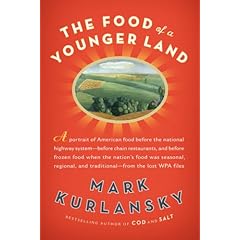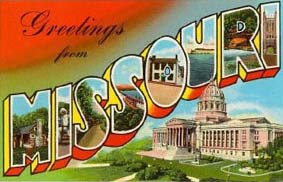Our First Words in Food Symposium
For those of you who could not attend our first Food in Words Symposium, here is a rundown of the day, chronicled by Tulane University student Faine Greenwood. The Southern Food and Beverage Museum's first ever Food Symposium and Literary Feast proved to be a huge success, bringing together the area's best and brightest food professionals and experts. Topics discussed included New Orleans cuisine past and present, the state of food writing, the city's diverse history, and the early writers and cookbook authors that brought New Orleans cooking to the world. The Intercontinental Hotel provided a delicious lunch. The inaugural event's theme was "The World's Fairs in New Orleans and Inventing Creole and Cajun Cuisine," and the day began with a delightful introduction to the topic by Professor Paul Freedman of Yale University. Freedman discussed how Creole food first defined itself via the influence of the world fair, moving from a regional cuisine into a cooking style embraced by an entire nation. According to Freedman, Creole cuisine's distinction comes from its remarkable "blended" quality - unlike that of New York City, a region that possess incredible diversity but little in the way of a characteristic cuisine, as New Orleans does. Many reasons have been put forth for New Orleans's unique cuisine, ranging from a French food-loving culture, a similarity of tastes across class-lines, an unusual willingness to "make do" with even the basest ingredients, and the cities (still existent) love of distinguishing itself from the rest of the USA. Tulane University archivist and food history scholar Susan Tucker followed Mr. Anderson, discussing the cookbook writer, globetrotter, and unforgettable character Lafcadio Hearn. Mr. Hearn, renowned for his writing on Japan and Asia in his later years, produced the legendary "Creole Cookbook" for New Orleans’s blowout 1884 Cotton Centennial Exposition during his stay in the city in the late 1800’s. The book did not appear until 1885, coming out rather late for the Exposition, but became a classic, gaining notoriety as one of the very first publications to attempt to define what Creole cuisine is. The next speaker was Rien Fertel, a PHD History student at Tulane, who has done research on Creole culture in society from the early 19th century to today. Fertel is interested in the word "Creole", and how the word's use has changed and evolved over time. Fertel discussed how others, or outsiders, define Creole food and New Orleans food habits. He argues that Creole cuisine, as we know it was not defined by the Creoles themselves but rather by outsiders with no Creole heritage. These outsiders took the Creole food they found and turned it into a commodity, as evidenced by the two 1884 cookbooks, in conjunction with the 1884-1885 World's Fair. These now-famous cookbooks were Lafcadio Hearn's “Cuisine Creole” and the “Christian Women's Association Cookbook,” works that still influence aspirant Creole chefs and home-cooks. The second discussion concerned the Depression-era Works Progress Administration and Creole Food, with Lawrence Powell, Chris Smith, and other lecturers. Lawrence N. Powell, a Tulane University history professor and Louisiana historian, began with a discussion of the “WPA'S Guide to New Orleans,” published as part of a national series under the storied Federal Writer Project. Under the auspices of Louisiana Federal Writer's project director, Lyle Saxon, the New Orleans guide became the best of the bunch, providing a definitive and beautifully written look at New Orleans, its history, and its distinctive cuisine. Saxon, passionate about New Orleans, wrote about the gestation and genealogy of classic Creole dishes, and was among the few of his contemporaries who gave due credit to the potent African influence on the city's culture, cuisine, and music. Chris Smith, manager of the Southern Food and Beverage Museum's collection and Big Read coordinator, discussed “Their Eyes Were Watching God” by Zora Neale Huston, one of the 20th centuries best Southern novels. Hurston herself was part of the WPA project, and spent time in New Orleans researching voodoo, securing unique information from the voodoo priestesses she interviewed during her short stay in the city. Smith stressed how Hurston's book uses food to move the plot along. Certain dishes, such as fried chicken, Mac and cheese, meatloaf, and other comfort foods - are used to define how people live and what their values are. Smith noted that Harper Lee also used food to define character in her "To Kill a Mockingbird,” among other famous Southern works that use edibles to paint a portrait of people and places. Smith then contextualized food and Hurston's political era alongside her literature, referencing such creations as her "Diddy Wah Diddy,” – a sort of food heaven only reachable on the back of a mule. As Smith’s lecture established, Hurston's status as a literary legend, oral historian, and flamboyant personality has secured her a place in the South's literary pantheon, well after her penniless death in 1960. Rien Fertel ended the discussion with a look at Lyle Saxon's influences, especially in regard to his 1928 "Fabulous New Orleans," a work combining memoir, history and myth into one robust and rapturous account of Saxon's experiences in the city. Saxon emphasized the French Market, the different ethnic groups who sold produce and food there around the turn of the century, and his impressions of the area as a young child, emphasizing especially the cuisine of his beloved city. Saxon, unusually for his time, listed ethnic restaurants alongside Creole standards, and gave credit to both slaves and Choctaw Indians for their influence on Creole cooking. What was Lyle Saxon's motto for New Orleans and New Orleans culture? "Have a good time while you can!" The Symposium broke for lunch, which was catered by the Intercontinental Hotel. Chefs demonstrated how to cook shrimp Étouffée, as participants sipped Sazeracs. A multi course lunch was then served, featuring a trio of soups, an entree of chicken bonne femme, and a dessert of baked pears in a bourbon sauce. SoFAB director Liz Williams was joined by Errol Laborde to discuss the 1984 World's Fair and its impact on Creole and Cajun Food--specifically that was the first time that the two styles were lumped together. This proved to be a lasting partnership, and even today the boundaries between Creole and Cajun food remain unclear. A panel discussion regarding "Food Writers and the Future of the Cuisine" was held next, featuring local experts Sara Roahen, Judy Walker, Ian McNulty, Pableaux Johnson, and Stephanie J. Carter. The writers hosted a lively talk about the current realities of food journalism, New Orleans cuisine, and the process and day-to-day realities of writing about food for a living. Judy Walker discussed her experience as the Times Picayune Food Editor, providing insight into the nuts-and-bolts process of constructing a cookbook - most notably last years "Cooking Up A Storm," a brilliant compilation of the Picayune’s archival recipes. Ian McNulty of the Gambit discussed his role as a freelance writer and restaurant reviewer, and discussed his protocol and parameters for assessing and writing about new restaurants and culinary culture, answering questions about the review process. Sarah Roahen then discussed her recent book, "Gumbo Tales," a work stemming from her time as a Gambit restaurant reviewer, recent New Orleans transplant, and passionate Louisiana foodie. Stephanie J. Carter, SoFAB's Communication Director, discussed the Museum's publications and her own food research. During the panel, particular attention was paid to the future of food writing in an era of disappearing newspapers: will the future of food-related literature of necessity be online? Will New Orleans cuisine survive into the future in an era of convenience food and online-culture, and if so, what forms will it take? The first annual Food Symposium and Literary Feast proved to be an engaging and interest event for local food writers, food professionals, and food lovers alike. The inaugural event will hopefully lead to a series of Food Symposium’s in the years to come, providing an annual venue for the discussion of - and appreciation of - New Orleans deliciously unique culinary culture. Thank you, Faine, for recording the entire event! We are looking forward to next year's symposium, which is already in progress. Check back for more information in the coming months.







